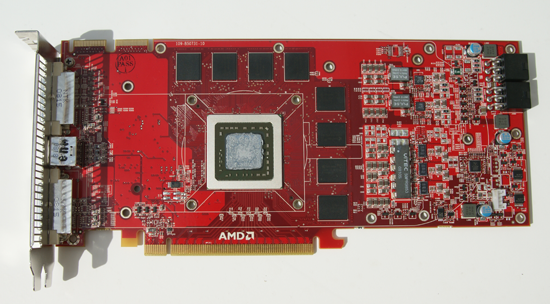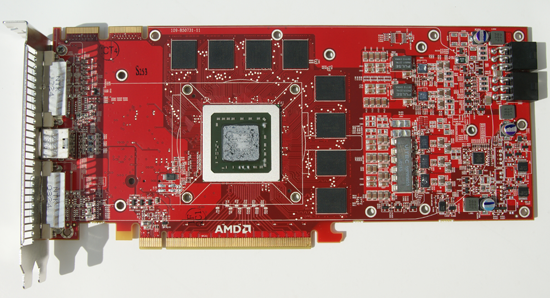The Radeon HD 4870 1GB: The Card to Get
by Derek Wilson on September 25, 2008 12:00 AM EST- Posted in
- GPUs
With the launch of the Radeon HD 4870, AMD showed us that they are not only still in the game, but they are back. Their hardware either out performed or was on par with NVIDIA hardware priced significantly higher. As a result, NVIDIA was forced to significantly adjust their prices downward to remain competitive. And, currently, they are competitive in terms of pricing and performance.
But in this business competitive isn't always good enough. AMD came out of the gate swinging for a knock out. And they did a good job of winning a significant amount of mindshare. They built a good product and priced it very aggressively at launch. While our concern is the current state of things, and our recommendation will be for the part that gives our reader the best value, that's not how every graphics card enthusiast sees it. The things companies do (like initially selling their hardware at way too high a price) can significantly affect the position of some enthusiasts.
That might be one reason NVIDIA went down the core 216 path with the GTX 260. A name more like GTX 265 would have been nice, and we already talked about how much we don't need dozens of parts all with slight tweaks and price differences cluttering up the market. But, the core 216 did help make NVIDIA's hardware more competitive (even if it didn't put it over the top). And more competitive is a good thing. Better competition does nothing but benefit the consumer, and we love to see it. If NVIDIA took that step because they want to win back some mindshare then that's fine with us. All we care about is what performs best in a price class, because that is what benefits our readers.
Of course, the core 216 might also have been anticipating the eventual availability of the Radeon 4870 1GB. In which case, the core 216 falls short.
Well, it isn't just that the GTX 260 falls a little short. The fact is that the extra RAM really does make a significant difference in many high quality high resolution situations when playing current games. We didn't expect the gains we see here, and combined with the original stellar performance of the Radeon HD 4870, we have to say that we are impressed.
The Radeon HD 4870 1GB has the same number of GDDR5 chips on board, but the devices on the 1GB model are double the density of the 512MB part.


Yes, these are different parts. The top one is the 512MB version and the bottom one is the 1GB.
The 512MB card we have uses Qimonda GDDR5, while the 1GB model we tested has Hynix devices. As GDDR5 is still pretty new, it is likely that the delay in getting out the 1GB model of the 4870 had to do with delays in getting a high enough supply of high density RAM.
Anyway, we mentioned that the GTX 260 core 216 doesn't quite keep up now that the 4870 has twice as much RAM. Let's take a look ath exactly how short it falls, first in terms of how much performance we gain over the original model and then in absolute terms.
















78 Comments
View All Comments
poohbear - Sunday, September 28, 2008 - link
"The best example of this is the 8800GTS which I assume many of us still own. We don't care how the 4870 runs on the Intel Core 2 Extreme QX9770 @ 3.20GHz used in the review, we care if the card will boost our FPS enough to warrant purchasing for our computer. It's a different type of comparison than the GPU-limited and CPU-limited tests they currently run, but very useful to the majority of us."QFT
please anandtech show us graphs that tell us if its worth it to upgrade from an 8800gt or similar hardware, that's what the majority of us own and are interested in knowing. This 1gb 4870 is interesting and all, but why would you do an article like this before addressing the aforementioned question that is pertinent to 90% of the rest of us?
PrinceGaz - Friday, September 26, 2008 - link
I must concur with this guy.Whilst I am more than capable of internally extrapolating other test results to these latest ones, I have an 8800GTS (640MB) so with all reviews on AT have to go through a double compare of the closest in the review to what I have.
Please Anand & co, include at least high-end cards from nVidia and AMD from two generations ago in all graphics-card reviews, and mid-range cards from ther previous-generation where relevant. We don't all buy a new card every few months, most people will buy a new graphics card every two years or less often, even quite a few of us who visit this site every day.
When I only see comparisons to other current cards as in this review, I invariably abort reading it and find a review on another site which includes a wider range of cards, which is a shame as I enjoy the technical info here- but if the only comparison provided is between current generation competitors, neither of which I have, then all the graphs are pointless as I (and most other people) have previous generation cards.
SiliconDoc - Friday, October 3, 2008 - link
That would be imformative and then we'd be informed. In tihs case, you must be a $$$$$$$$$$$$$$$$$$$4 loaded supergame monster - and so it doesn't matter.Just crank up another 4 or 5 hundred on the collegiate mastercard if you blow the first couple of choices...you know that can be the geekfest lan machine or whatever.
saiku - Wednesday, October 1, 2008 - link
I must also agree to the two posters above me. I too have a 8800 GTS and would like to know if this card makes sense for an upgrade. Can AT please keep 1-2 year old tech around when they talk about new parts?formulav8 - Saturday, September 27, 2008 - link
Anandtech finally game AMD the props they deserved along time ago instead of kissing up to nvidia who had no care in the world about charging almost a literal arm and leg. Not that AMD/ATI cares all that much but at least they didn't milk us for all we're worth like nVidia did the past couple years. Just my opinion of course :)Decent review by the way. I do agree though that reviews should be more real world in the sense that they be reviewed with more reasonable, mainstream components like a Phenom, Higher End X2, and Low-Mid end Core2, memory configs like 2GB at 667/800 mhz, ect... Since that is where most gamers will be at. Again, just my opinion :)
Jason
SiliconDoc - Saturday, December 27, 2008 - link
How about mainstream monitor resolutions ?Oh that's right , the highend cards blow away mainstream monitor resolutions now.
Well, I guess they had better start including the 2 grand required for proper monitor upgrades to run the resolutions they post all their reviews in now.
Somehow that giant 30 inch Dell DWP (or two or three) 2560x1600 sitting in the test lab isn't magically appearing attached to their readers gaming rigs.
Jorgisven - Monday, September 29, 2008 - link
The trouble with using mid-range components is that they can unneccessarily bottleneck the performance in ways that can affect different GPU's differently, in different situations. If you scale back your components and then put a $500 GPU in, the results would be skewed, especially at higher details. Since this is a higher end GPU, one would expect that you would have components relative in price as well.SiliconDoc - Friday, October 3, 2008 - link
That's not the worst of it Jordan ...How often do you run a 2550x 1900 or whatever supermegga massive giganto resolution ?
I guess I'll have to take a rtip to Taiwan for my 37" super rezz megoo mighty mouse monitor... that's only $2,567.98 plus tax and overseas shipping to even run the ding dang rezzzzzzzzzzzzzes they test in nowadyas.
Yeah, gee, we've all got these monitors that run this extraordinary resolution that you CANNOT EVEN FIND in the retail store market - and barely online when you try.
CRIPES.
( A friend of mine can't stop cranking up his rezzz - he just got 2 more monitors last night - so he cranks the thing up till the monitors are buzzing and hissing LOL - then I send him a pic or a screenshot or something - and say blah blah - and he can't read the thing - the lettering is the size of the ding dang microdot.
rofl
.000000035 um lettering. lol
He doesn't READ much. rofl.
Patrick Wolf - Thursday, September 25, 2008 - link
While you can go back to previous articles which have basically the same Test Setup with the same games, it would be very convenient if they would include cards from the 9 series in their newer articles.Hxx - Thursday, September 25, 2008 - link
Why should they be compared? 9800s are old tech, not in high demand anymore.Thats whyAbout the article, the writer did a very good job. I'm surprised to see the 4870 coming up in front of the gtx280 in some games. The 4870 1gb is the best card from a price/performance perspective.
Looks like Nvidia is due for another price drop, lol. Good job ATI.